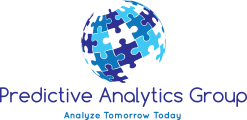A regional fintech lending to mid-to-high risk consumers in 24 states recently asked us to help update its 2-year-old strategy for line assignments, risk-based pricing, and decisioning and expand beyond its use of generic data sources that were not performing to management expectations.
We connected the client to four data providers to obtain retro data on two quarters of approved and declined applications. Data scientists from Predictive Analytics Group (PAG) then created a reject-inference model to project the performance of declined applications, enabling both swap-in and swap-out capabilities of the new strategy. We then used true performance on the approved accounts and reject inferencing on the declined applications to create a new underwriting approach.
After we identified and implemented key areas of automation for the company with three new data sources for both credit and fraud-risk targeting, the client saw a 28% decrease in Lifetime Loss Rates; an increase in approval rate of 7%, and a 5% reduction in manual referral rate within 18 months, all significantly better that the client’s goals.
This is not a one-off result. We regularly talk to consumer lenders facing tighter regulation, limited data sourcing, and continued economic concerns (including inflationary pressures that many people believe could lead to a near-term recession). The reality is that profitability pressures are forcing banks to review their underwriting strategies.
Most of these discussions about developing more sophisticated underwriting strategies take place with startups (including larger lenders introducing new product lines) and lenders that don’t have enough statistically significant data of their own and want to leverage PAG’s data to augment their own customer’s data.
PAG builds several dozen effective consumer-loan underwriting models and strategies every year, thanks to a team of data scientists and risk professionals who average more than 20 years of client-side management experience and have seen every type of economic cycle. We can draw on our 30MM-record proprietary data set of bureau and non-traditional data sources to build the most accurate and targeted Underwriting models in the industry.
When we’re asked about ways to improve consumer-lending underwriting strategies, we start with five high-level recommendations:
- Accurately predict your profit margins and loss levels. P&L models are critical to targeting a population of consumers who will likely to be interested in your product and allow you to earn an effective rate of return on your product. This includes tracking your cost to market/acquire, predicting future loss rates, and effectively choosing price points that will attract customers while providing a safe return on assets.
- Understand your target demographic and your products value proposition. Your consumer lending product must have a clear value proposition (rewards, affinity, digital lifecycle, etc.) to effectively target the customer demographic you want with your marketing campaigns. Otherwise, the adverse selection you get with your booked applications could ruin the risk curves in your profit modeling.
- Use robust and predictive data in statistically significant quantities. Bureau data is a good source to start with, but it often leads to an incomplete picture of the consumers risk profile. Combining bureau data with alternative data that shows consumer performance on things like rental records, medical debt, mobile phones, social media, and other non-traditional data sources allows you to form a complete holistic picture of consumer risk.
- Use sophisticated analytic techniques with experienced risk professionals. Simply banding risk scores together will not allow you to target the high performers from each score band in your acquisition model. Experienced risk professionals will know when to use joint odd matrices, tree logic and other forms of linear regression and machine learning models to identify the best methods of separating the performing customers from the likely to not perform group. In addition, predictive analytics can be used to identify potential fraudsters and reduce the risk of fraud.
- Test and validate. No matter which Decision Engine you use, you must test pre- and post-launch to ensure your strategy is working as intended and your volumes, approval, and booking rates are distributing across the risk spectrum as you intended in the model design stages.
If you’re interested in learning more about how predictive data analytics can help you improve your underwriting strategy, click the button below to schedule a free consultation. We’ll show you how our data and analytic solutions can help you optimize your profit margins, target your ideal demographic, use robust and predictive data, apply sophisticated analytic techniques, and test and validate your strategy.





